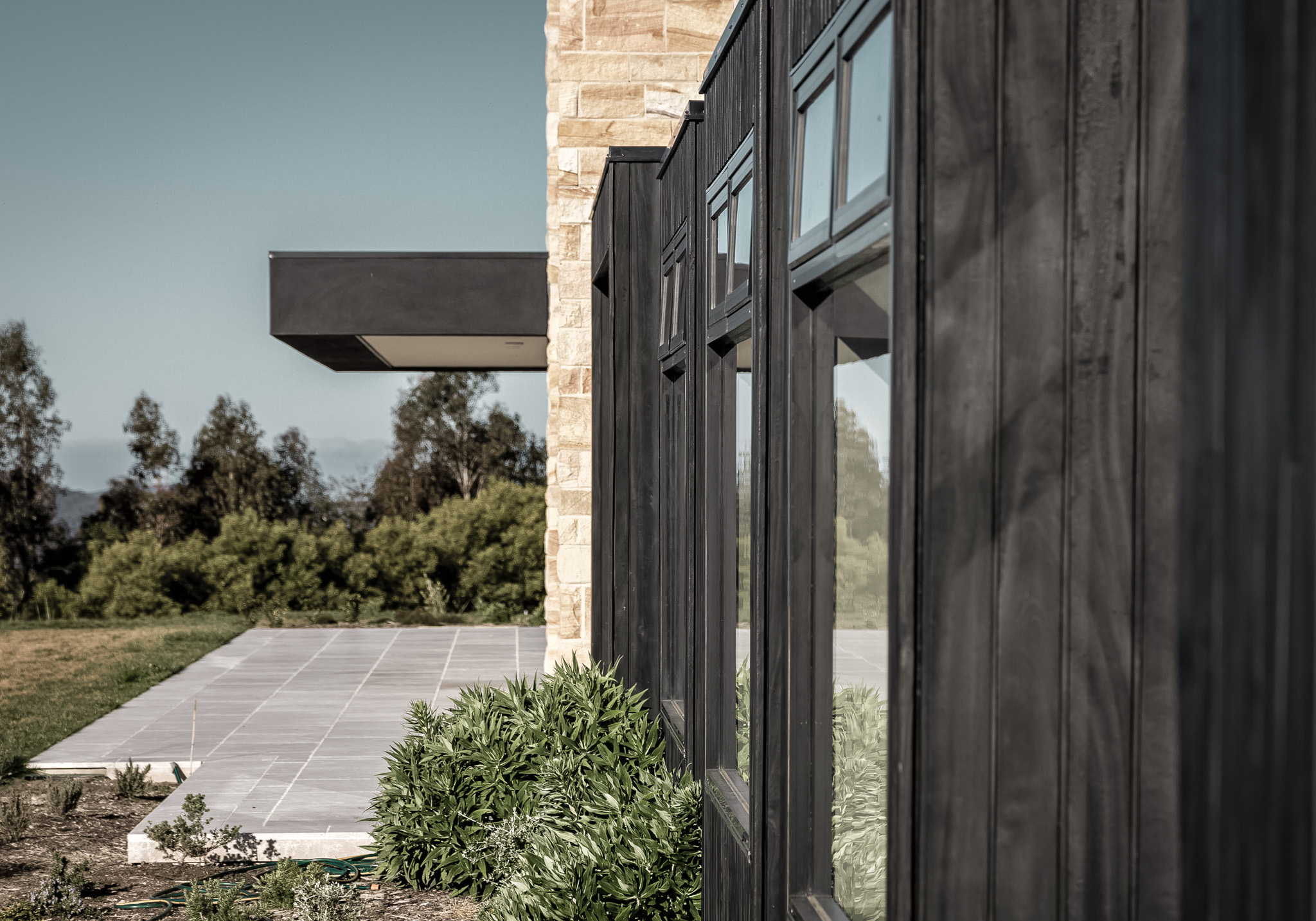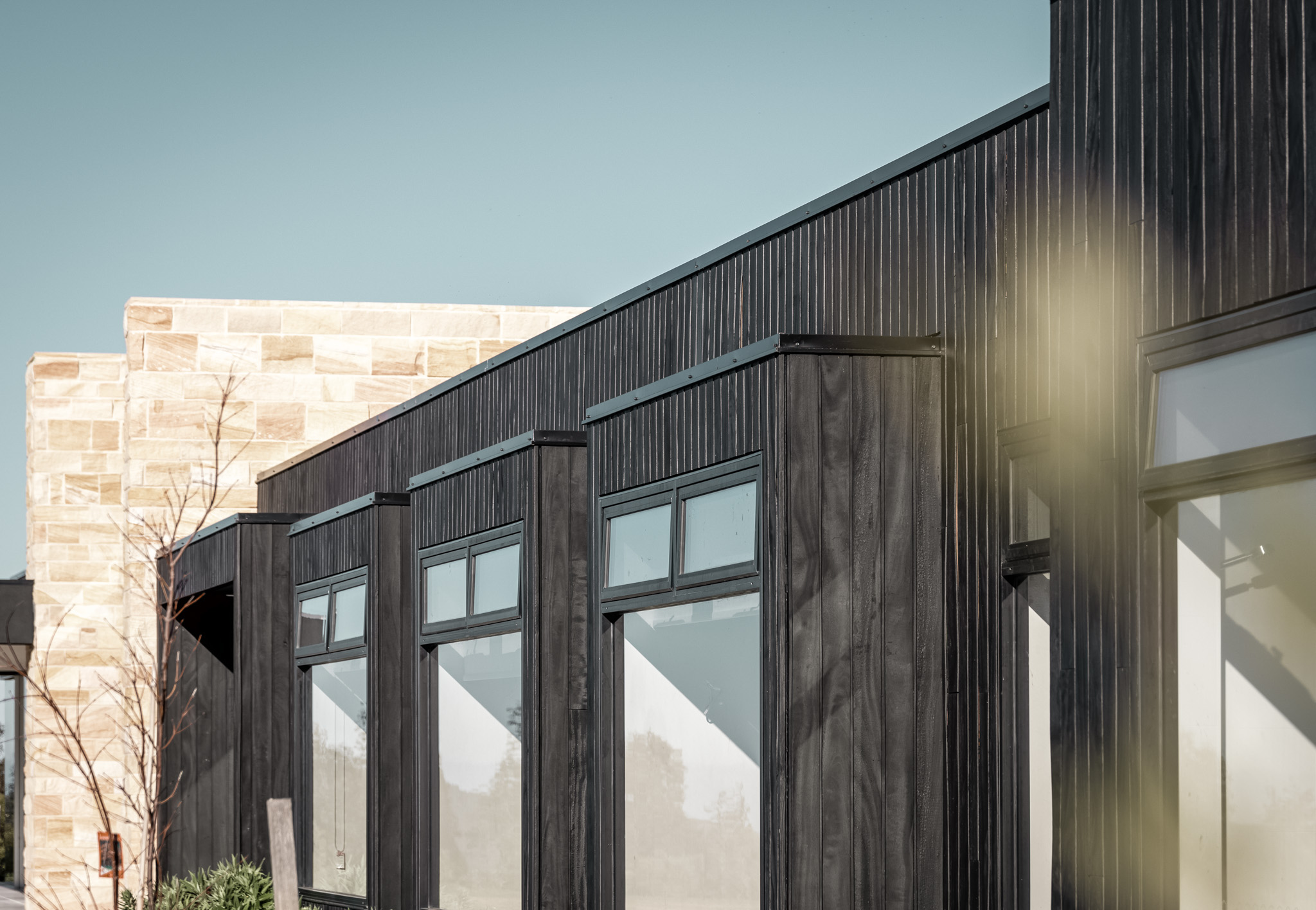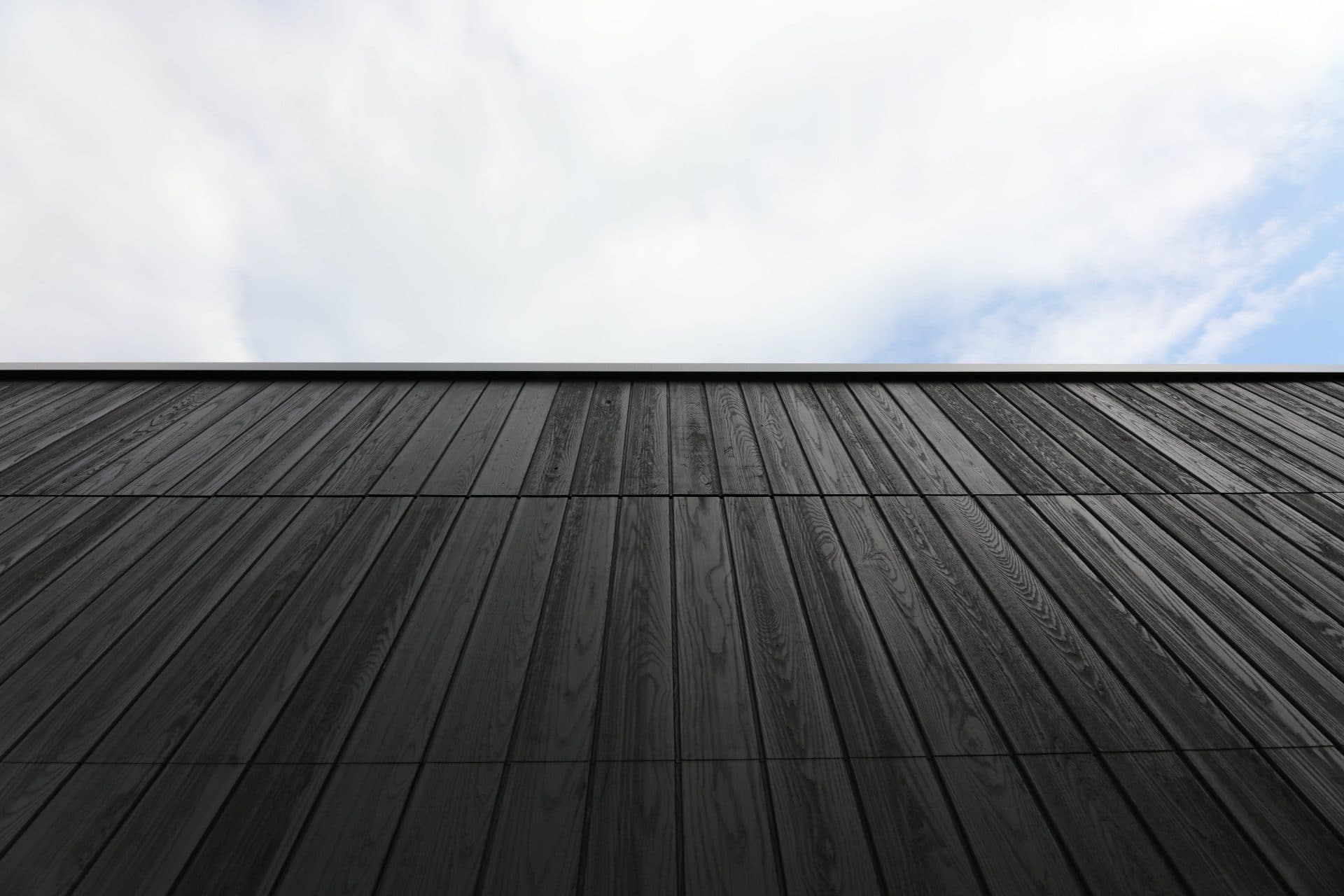
Why Use Charred Timber Cladding, Also Known As Shou Sugi Ban or Yakisugi
What is charred timber cladding also known as?
Charred timber cladding is also known as Shou Sugi Ban or Yakisugi. These terms originate from Japan, where the technique of charring wood to enhance its durability and aesthetic qualities has been practiced for centuries. “Shou Sugi Ban” translates to “burnt cedar board,” while “Yakisugi” means “grilled cedar.” Both terms refer to the traditional Japanese method of charring wood to create durable and visually appealing building materials.

Modinex, your trusted cladding partner
At Modinex, we have been crafting timber solutions for over 40 years. Charred timber cladding, also known as Shou Sugi Ban or Yakisugi, is used for several reasons:
Enhanced Durability: The charreding process increases the wood’s resistance to rot, pests, and decay. The char layer acts as a protective barrier, extending the lifespan of the wood and reducing maintenance requirements.
Improved Fire Resistance: Despite being wood, charred cladding has enhanced fire-resistant properties due to the carbon layer formed during the charring process. This makes it a suitable choice for areas prone to wildfires or where fire safety is a concern.
Aesthetic Appeal of charred timber cladding: Charred and Shou Sugi Ban cladding offers a unique and visually striking appearance that adds character and depth to buildings. The charred surface creates a rich, textured finish that can complement various architectural styles, from modern to traditional.
Natural and Sustainable: It is an environmentally friendly option as it typically involves using natural wood such as cedar, cypress, or pine. This appeals to those seeking sustainable building materials and eco-conscious design choices.
Low Maintenance: Charred and Shou Sugi Ban timber cladding requires minimal maintenance compared to other exterior finishes. The charring process seals the wood’s surface, reducing its susceptibility to moisture absorption, decay, and insect infestation. As a result, it typically requires less frequent painting, staining, or sealing.
Cultural and Historical Significance:Charred and Shou Sugi Ban timber cladding and charred timber battens have roots in traditional Japanese architecture, adding cultural significance and interest to the material. It reflects centuries-old techniques of preserving and protecting wood, which can resonate with those interested in historical or cultural elements in design.
Versatility: Charred and Shou Sugi Bancladding can be applied to various types of wood and used in different architectural contexts, including exterior siding, interior wall paneling, and decorative features. Its versatility allows designers and architects to explore creative applications in both residential and commercial projects.
Overall, charred and Shou Sugi Ban cladding offers a combination of durability, fire resistance, aesthetic appeal, sustainability, low maintenance, and cultural significance, making it a popular choice in contemporary architecture and design.

Charred cladding, also known as Shou Sugi Ban or Yakisugi, can be created using various timber species, although some are more commonly used than others. The choice of timber species can influence the final appearance and characteristics of the charred cladding. Some of the timber species commonly used for charred Shou Sugi Ban cladding include:
- Spotted Gum Charred Shou Sugi Ban Cladding:
Spotted Gum is one of Australia’s premium native hardwoods with a striking appearance and a high degree of natural durability and strength, making it an ideal timber for a variety of structural, exterior and interior applications. Architects and designers throughout the world value Spotted Gum timbers for their back-sawn grain structure, attractive markings and vibrant colour palette.
- Southern Spotted Charred Shou Sugi Ban Cladding:
Southern Spotted also known as Cumaru is sustainable harversted with PEFC Certification, Southern Spotted is an extremely strong timber with a very high density. The Southern Spotted is native to the Southern Hemisphere and comes from the Dipteryx Odorata Tree.
Not only is this timber incredibly strong due to its interlocked grain, but it is also exceptionally stable with its popularity quickly growing worldwide. The Southern Spotted lumber is recognised across the industry for its stiffness, strength, and hard finish, which enables it to be used in a variety of residential and commercial applications. What’s more is the natural hardness and oils infused in Southern Spotted, creates a naturally treated wood that will stand the test of time in any environment. The versatile Southern Spotted hardwood is typically used in applications such as flooring, decking, bridges, boardwalks, marinas, pergolas, handles, furniture, heavy construction, docks, bearings and more. It can also be used in both internal and external environments.

Do you need to maintain Charred timber Cladding?
While charred cladding is known for its durability and low maintenance requirements compared to some other exterior finishes, some degree of maintenance may still be necessary to preserve its appearance and performance over time. Here are some considerations regarding maintenance for charred cladding:
Cleaning: Periodic cleaning may be required to remove dirt, dust, and other debris that accumulate on the surface of the charred wood. This can typically be done with a soft brush, water, and mild detergent. Avoid abrasive cleaners or pressure washing, as they may damage the charred surface.
Inspecting for Damage: Regular inspection of the charred cladding is essential to identify any signs of damage, such as cracks, splits, or areas where the charred layer has been compromised. Prompt repairs may be necessary to prevent further deterioration.
Re-coating or Re-sealing: Depending on the specific charred cladding product and installation method, re-coating or re-sealing the wood surface may be recommended periodically to maintain its protective properties and appearance. This could involve applying a clear sealant or protective finish to the charred wood.
Monitoring Moisture Exposure: Charred cladding is relatively resistant to moisture due to the charring process, but prolonged exposure to moisture or standing water can still lead to issues such as rot or mold growth. Ensure that the charred cladding is properly installed with adequate ventilation and drainage to minimize moisture infiltration.
Inspecting Fasteners and Hardware: If the charred cladding is installed using fasteners or hardware, regularly inspecting these components for corrosion or damage is important to ensure the structural integrity of the installation.
UV Protection:Exposure to sunlight over time may cause the charred surface to fade or lose its color intensity. If preserving the charred appearance is important, consider using a UV-protective coating or finish to minimize sun damage.
Overall, while charred cladding typically requires less maintenance compared to some other exterior finishes, it is still essential to follow manufacturer recommendations and perform regular inspections and upkeep to ensure its longevity and appearance.

Does Shou Sugi Ban and Charred Timber Cladding rub off?
Yes, the charred finish of charred and Shou Sugi Ban timber cladding can rub off if not manufactured correctly. There is a lot of science and skill to achieve a high-quality char finish. If moist or green timber is used that isn’t fully dried, there is a high chance that the char will come off over time. At Modinex, we use high-quality timber that has a moisture content to achieve a product that will be a feature of your project for a time. At Modinex we use a signature coating that bonds all the carbon particles to give extreme durability on your build.
You can use Shou Sugi Ban charred timber internally or externally.
